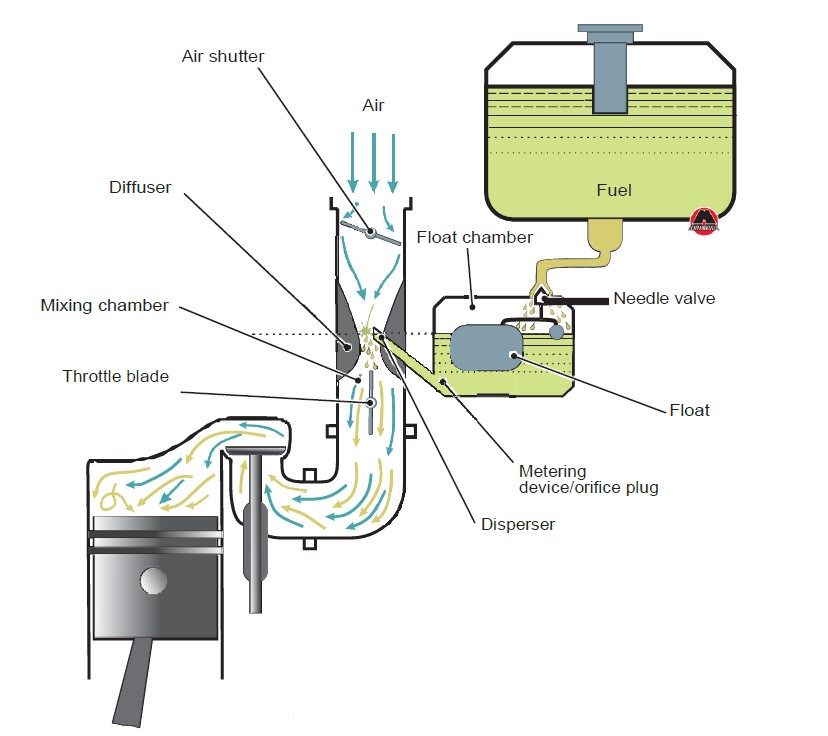4.11.4 The simplest carburetor
All the carburetors, even the most modern ones that ended their life in the mid-nineties of the twentieth century, basically work according to the principle, which can be described by the example of the simplest carburetor. It will be described and shown in Figure 4.47 b.
 Figure 4.47b Simple carburetor.
Figure 4.47b Simple carburetor.
A carburetor is a device, which mixes gasoline with air in a certain proportion and thoroughly sprays gasoline in the air.
Upon paying attention to Figure 4.47 b, we can say with confidence that, indeed, there is nothing complicated in the carburetor! It consists of the following parts: a float chamber with a float and a needle valve, a metering device with an orifice plug and a disperser, a mixing chamber with a diffuser, a throttle blade and air dampers. The carburetor mixing chamber is connected to the engine intake manifold.
The float chamber is used for maintaining a constant fuel level inside the disperser. Using a float with a needle valve, the fuel in the chamber and the disperser is maintained at a constant level - 1-1.5 mm above the lower end of the disperser. This level ensures easy suction of fuel from the disperser and eliminates the leakage of fuel from it when the carburetor is not working. The carburetor, shown in Figure 4.47b, receives fuel from the fuel tank by gravity due to the ubiquitous force of gravity on Earth.
At the moment of lowering the fuel level inside the chamber, the float descends and opens the needle valve. The fuel starts flowing into the float chamber. Upon reaching the normal level, the fuel will raise the float, which, using a needle valve, will cut off its flow into the float chamber.



















2 MB